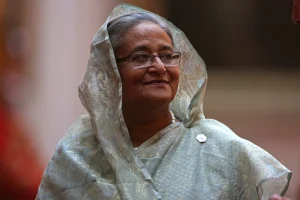Nations bid to protect oceans in world-first High Seas Treaty
The High Seas Treaty, the world’s first-ever treaty to protect international waters, has been struck, as more than 60 nations come together to cooperate on a joint mission to protect the globe’s oceans, according to Africanews, September 21.
The High Seas Treaty is the first of its kind, aiming to protect international waters with a focus on preserving marine biodiversity. This is a major milestone in the global fight to protect the environment, with international waters comprising two-thirds of the world’s oceans and nearly half of Earth’s total surface area.
The treaty aims to bring international partners together to protect the environment in regions of the world that fall outside the jurisdiction of any single country, with the hope that their cooperation will address pressing issues linked to climate change, deep-sea mining, and overfishing.
Commenting on the landmark moment, Johan Bergenas, senior vice president of Oceans at the World Wildlife Fund, said, “The high seas are the world’s largest crime scene,” expressing just how important the treaty is to the world’s oceans.
Currently, as has been the case with so many global climate treaties of its kind that have come before it, the future of its enforcement is uncertain, as some of the biggest powers on Earth are yet to ratify it.
The USA and China have signed the treaty, clearly signalling their intent to align with the treaty’s objectives, though this is without creating any legal obligations. Other major players include Japan and Russia, who, to their credit, have been active in preparatory talks.
Once the treaty has been ratified, there is a 120-day countdown that begins until the enforcement mechanisms begin. However, this section shares similar issues with climate treaties of the past, where countries, uneasy about being held accountable for shortcomings, fail to be tough on enforcement powers that may be used against them in the future, regardless of the consequences for the planet. Following these steps, much work needs to be done to discuss the funding, implementation, and enforcement of these consequences.
Lisa Speer, director of the Natural Resources Defense Council’s international oceans program, said the world’s oceans are “the responsibility of all of us and none of us at the same time,” highlighting the importance of an international agreement on the topic, which she believes fills a critical gap in the existing treaties.
“Marine life doesn’t respect political boundaries. So fish migrate across the ocean. … Same with turtles, with seabirds, and a whole host of other marine life,” Speer said. “And so what happens in the high sea can really affect the health and resilience of the ocean within national jurisdiction, within our coastal waters.”
Critical to the ocean’s survival is the issue of plastic pollution, which has also been at the centre of international discussions in Geneva in August 2025. Discussions on solving the climate emergency have not failed to be urgent or relevant yet, but as the years unfold and action remains slow to be implemented, the everyday effects are being increasingly felt in people’s pockets, on the social structures in societies around the world, and on their plates remains of crucial importance.
The Amazon Rain Forrest is often described as the ‘lungs of the world,’ however, the ocean is just as important in providing the Earth’s oxygen supply, critical to all life on the planet, generating around 50% of the world’s oxygen supply. The high seas are host to a wide variety of marine life that must be protected, while the ecosystems themselves regulate global temperatures by absorbing heat and carbon dioxide.
The treaty is also another successful step towards the “30 x 30” pledge, which aims to protect 30% of global land and sea areas by 2030.
Crucially, this treaty creates a legal mechanism for countries to establish marine protected zones in international waters, as well as for potentially harmful activities like geoengineering schemes and deep-sea mining. It also establishes a framework for technology-sharing, funding mechanisms, and scientific collaboration across nations. Decision-making power will fall back to multilateral bodies called ‘Conferences of the Parties’ or COPs, meaning that the response will be coordinated rather than relying on countries to act alone.
A timeline has already been set for countries to meet to discuss the pressing issues-positive and negative the treaty. One year from its implementation, nations are expected to meet to discuss foundational questions such as financing and oversight at the very first COP, for example. And for those countries dragging their feet on ratifying the treaty, they now have an incentive to pick up the pace, with countries that fail to ratify before COP1 not possessing any voting rights at COP1.
However, several analysts have highlighted a structural flaw: without an independent body to impose penalties, implementation depends on states’ willingness to regulate themselves.
As protests on climate change, and particularly the use of fossil fuels, continue, the globe does appear to still be able to come together for the greater good-even during times of great political upheaval, war, and division.
Africanews, Maghrebi.org
Want to chase the pulse of North Africa?
Subscribe to receive our FREE weekly PDF magazine












